When the Nintendo Switch was announced, I made my plans to only buy it when it had both a Zelda and a Fire Emblem game. The first was released very quickly with The Legend of Zelda: Breath of the Wild, but its open-world format certainly did not seduce me enough to buy the console based on it alone.
The second was announced sometime later as Fire Emblem: Three Houses, and its concept was also a major blow to my plans. After the first trailer and detailed information, I thought that Fire Emblem: Three Houses would be swept away by the disproportionate success that was Fire Emblem Heroes, giving way to predatory cashing models and focusing on its “harem” vibe of collecting cute girls over the thrill of medieval warfare and combat.
I was wrong though. Very wrong.
Fire Emblem: Three Houses does change its formula when compared to the previous major games of the franchise. However, it is more like an amalgamation of the ideas brought to the board by Fire Emblem: Awakening and Fire Emblem: Fates. A combo that culminated into one of the largest games of the modern generation.
Fixing the Mistakes
The first thing to notice is how this is just one game. A single Nintendo Switch card you slide into the console and play it. The attempt of cashing like Pokémon with Fire Emblem: Fates was certainly met with backlash at Intelligent Systems. That game had three (initially two) different routes to its tale, but each was offered by a new game with a full price tag to it. It was ridiculous, to say the least. I mean, it still works with Pokémon today because it is a model that melded into the franchise, not because it is smart marketing. People will not buy three games, and those who do will perhaps get angrier after they realize they paid full price for the very same gameplay experience thrice.
Fire Emblem: Three Houses is very close to being three games built into one. In fact, it may as well be four. In it you are offered to select one of three houses at the beginning of its tale, hence the name of the game. After you pick from the Golden Deer, Blue Lions, or Black Eagles, you play through the first half of the game in some sort of “preparation” mode, where you spend a lot of time recruiting allies, improving them, and experimenting with combinations.
This first half is very similar regardless of the house you pick. The changes only happen because the characters are different, but the general script is unchanged. The second half, however, is a completely different beast. There are four paths to go, and each offers a lot of unique dialogues, battles, and discoveries.
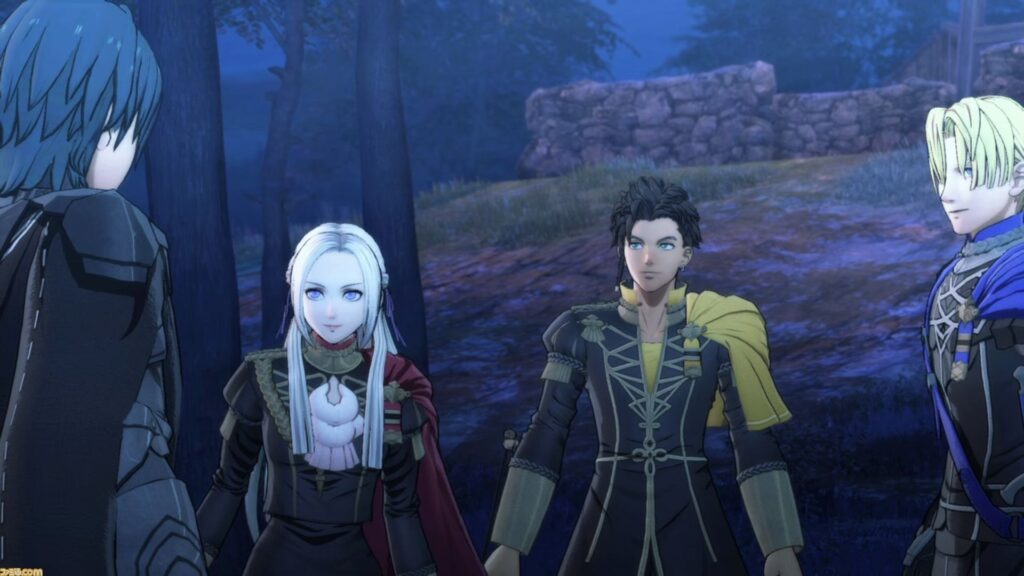
It’s still Fire Emblem
At its core, Fire Emblem: Three Houses is a medieval fantasy tale of warfare. You control Byleth, a mercenary-turned-teacher who is employed by the Church of Seiros to instruct one of the traditional three houses of its academy. Byleth, however, is also haunted by an internal voice of a young girl and a lot of mystery about his or her past, which seems intricately tied with the very Church of Seiros and its supreme leader, the archbishop Rhea.
As a professor to a class of nobles and a few commoners striving for knighthood, you are tasked with a multitude of things to do, each culminating into what makes Fire Emblem the franchise it is: tactical combat.
The combat is an old friend of the franchise’s fans. You get a phase to command your units and attack, you get a phase to defend against enemies’ attack, and you rely on limited resources of spells and breakable weapons to win. Each unit you control has a class, which gains promotions depending on how you level them up and how you teach them at the academy (more on that later), and they are all very familiar to anyone who’ve played a Fire Emblem game before: you have assassins, myrmidons, pegasus knights, warriors, dark mages, and so on.
This format, which has been established long ago and polished by Fire Emblem: Awakening, primes in being simple to understand for the new player and complex enough to push veterans to experiment and explore.
You can, for example, play Fire Emblem: Three Houses on its Normal difficulty by just following the flow of the game, hardly working towards grinding for class masteries and paying much attention to skills. However, even on Normal, a playthrough can feel quite satisfying when you understand these nuances of the game’s system and take your time to explore them, powering up your units to a degree where they can clear the battlefield like super-powerful entities.
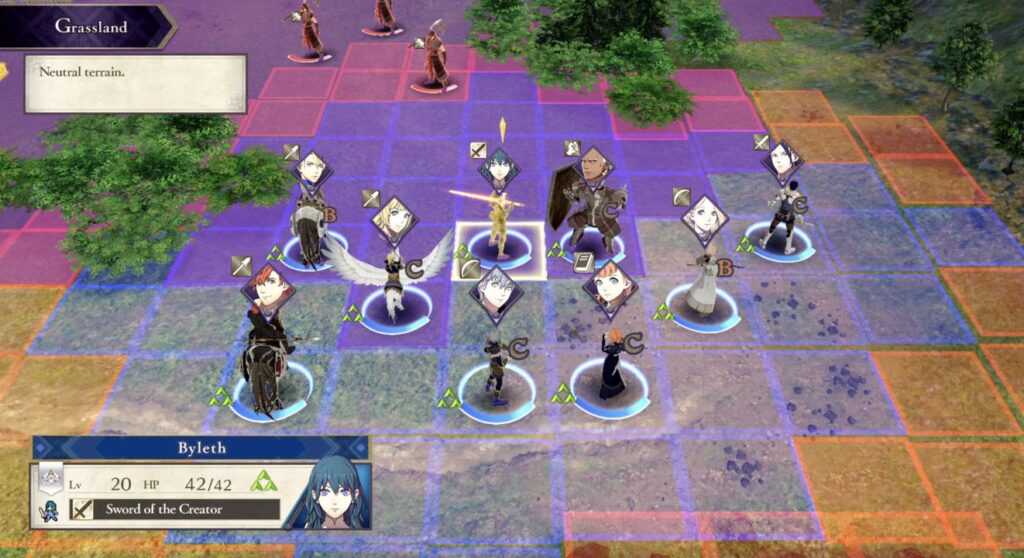
For those who don’t know, the combat format of Fire Emblem relies on low-numbers and deadly attacks. Most of the time you will be looking to one-hit-kill your enemies, or otherwise suffer a similar fate. Each attack can either defeat a unit or leave it critically wounded if the right tactic is selected or barely do damage if you pick the wrong tactical choice. For example: if a fight breaks out between a mage unit and an armored knight unit, whichever side initiates the attack is likely to kill the other in one strike.
This high-stakes formula of Fire Emblem usually leads to a steep learning curve, brutally punishing newcomers as they try to understand the game’s mechanics. In Three Houses, however, the Normal mode (and even the Hard mode, to some extent) manage to give some sparing room for learning at its beginning, working a lot better to introduce the franchise to those who are yet to understand the intricate aspects of it.
And there’s a lot more
Fire Emblem: Three Houses, however, offers much more than its battle. In fact, I could argue that you are likely to spend more time preparing your units for battle than actually participating in them. How so? Well, by partaking in the multitude of choices offered by the game exploration phase, which happens between main story battles.
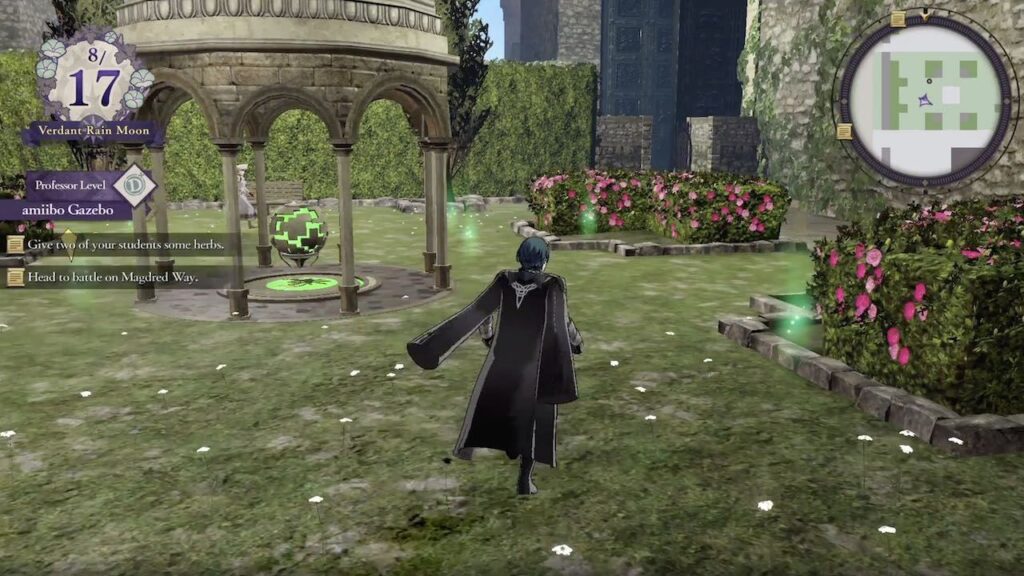
Instructing
The first thing you may notice is that you are a teacher and you can, once a week, select how your students will improve. Of course, we are talking about a class of aspiring knights and leaders, so this means instructing them on combat qualities, not history, maths, or the like.
Fire Emblem: Three Houses offers a skill rank system which is used to unlock new abilities as well as acting as a requirement to qualify for class promotion. There are ranks for swords, lances, axes, brawl, bows, faith, reason, heavy armor, riding, flying, and authority, two of which you can select for a unit to improve during a week’s period, even if it does not participate in combat. This means you can prepare and mold units towards a specific build you like during the exploration phase. Each student has areas where they improve faster or slower, but it is up to you to decide how they will be improved. You can even fine-tune a unit’s development by giving them personal instruction in some areas.
Support
As in Fire Emblem: Awakening, the support system here works to improve abilities of nearby units in combat while also unlocking new dialogues between two characters, giving them a much needed depth. You see, although there are some interesting characters acting as students or as other teachers and employees of the church, many of them are standard anime tropes put on steroids, which means they can be utterly annoying and predictable. In fact, when compared to previous Fire Emblem games, the cast here is perhaps the most anime-like to have ever graced the franchise, which could be a deadly curse if not for the interesting dialogues unlocked by the support system and the fact that you can ignore some of the annoying children if you so choose.
Support builds in many different ways. It increases when units are activated close to each other in combat, by partaking in some activities during the exploration phase, such as eating together and singing at the choir, or when Byleth gives a present to someone of your liking.
Exploration
You can also just spend time speaking with each unit or NPC during your free time, prompting dialogue choices that may affect your support with them, or simply participating in activities such as fishing, fighting tournaments, gardening, or messing around with the weapons and equipment of your units.
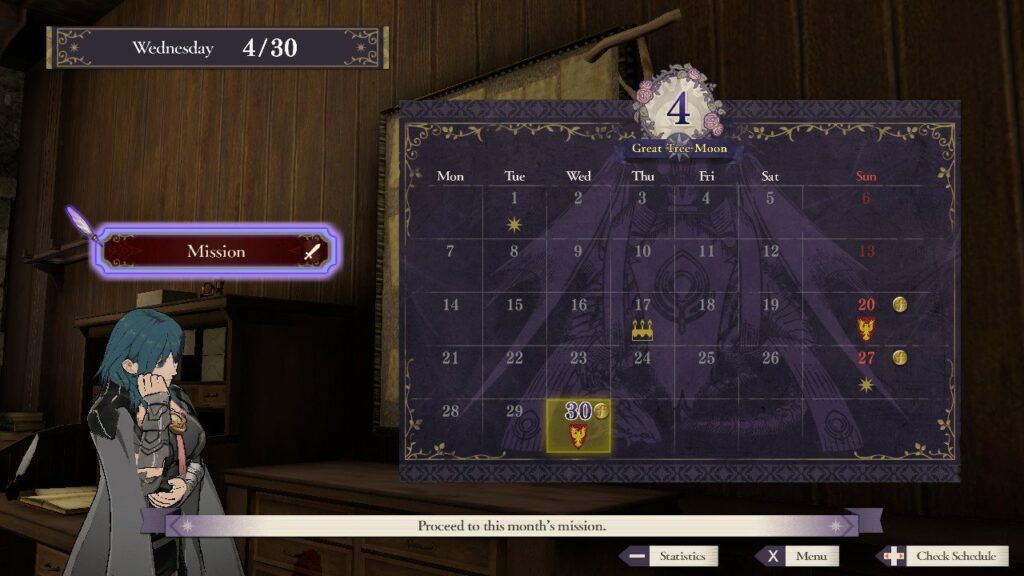
A rigid structure
The exploration phase in Fire Emblem: Three Houses works because the game is built around a very rigid structure. So rigid, in fact, it actually makes logic and urgency secondary.
The game is divided by months. At the end of each month there is a mission related to the main story, and during its weeks you can instruct your class and fine-tune your units to your liking. Each week, however, also has a free day, in which you can either explore the monastery and partake in the activities of it, pick a handful of students for extra classes, or go out in the field and battle to build experience or unlock optional content.
What happens is that this structure is maintained regardless of story events. This means you will always get an urgent mission on the first day of the month and then just casually fish and talk to your students for upcoming weeks until, out of nowhere, the mission becomes urgent and you participate in it on the final day of the month. It works though, because this rigid structure allows you to explore the most important aspect of this game:
Preparation
Fire Emblem: Three Houses is a game of tactical combat, that’s for sure. However, unlike its previous entries, it is much more about the preparation and leveling than ever before. The exploration period is not simply casually strolling around the monastery. It is a period where you need to manage your limited activities in order to better prepare your units, improve them, earn money, unlock new support ranks, recruit new students, and ultimately build your perfect army.
This phase of the game is crucial into making each combat even more important, because it is while fighting that you put your effort and preparation into play to see the results. By the end, a player can spend much more time in exploration phases, especially at the first half of a playthrough, than actually fighting.
It can be really gratifying to see all your planning paying out as you manage to unlock a new class or ability, recruit a student you were aiming for, or simply seeing how much more efficient a unit becomes after acquiring one or more abilities. This is an experience that older Fire Emblem games only scratched, as preparing for combat was simply a matter of selecting equipment and which units to jump into the battlefield.
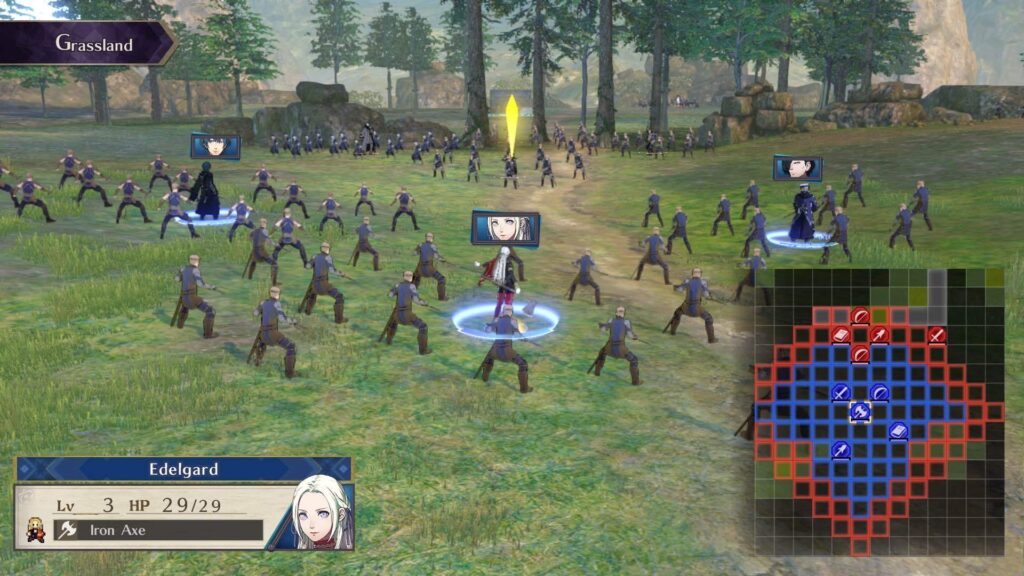
And it’s about armies
Well, almost all Fire Emblem main quests are about large-scale warfare. The games, however, were also about just a few guys participating in a grand scheme, being swept by the tale and participating in more personal fights against small units of foes. Fire Emblem: Three Houses is about clashing armies, and there are plenty of ways to make this aspect stand out.
The first are the battalions, a supportive item you can equip on your units. Each battalion offers improvements to statistics, grants a new ability to use in combat, and exists to make sure you know that you are not simply controlling one guy, but a small army. While in combat, a unit followed by a battalion will have these guys on the background cheering, chanting, or attacking, offering a visual cue that this is a mass-scale combat and not your skirmish with just a few dozen people in it.
The second way to make the grand scale of war stick is by its story. Each of the three houses you can pick at the start is led by an aspiring leader of a region: Ederlgard is the next emperor of the Adestrian Empire, Dimitri is a king-in-wait of the Kingdom of Faerghus, and Claude is a heir to the leadership of the Leicester Alliance.
These three leaders act like secondary protagonists of the game and their tales are tied to armies and clashing forces of great proportions. At every point during the story there are mentions of generals, armies, and war in general. You know your students are not simply stand-alone characters, but leaders of men.
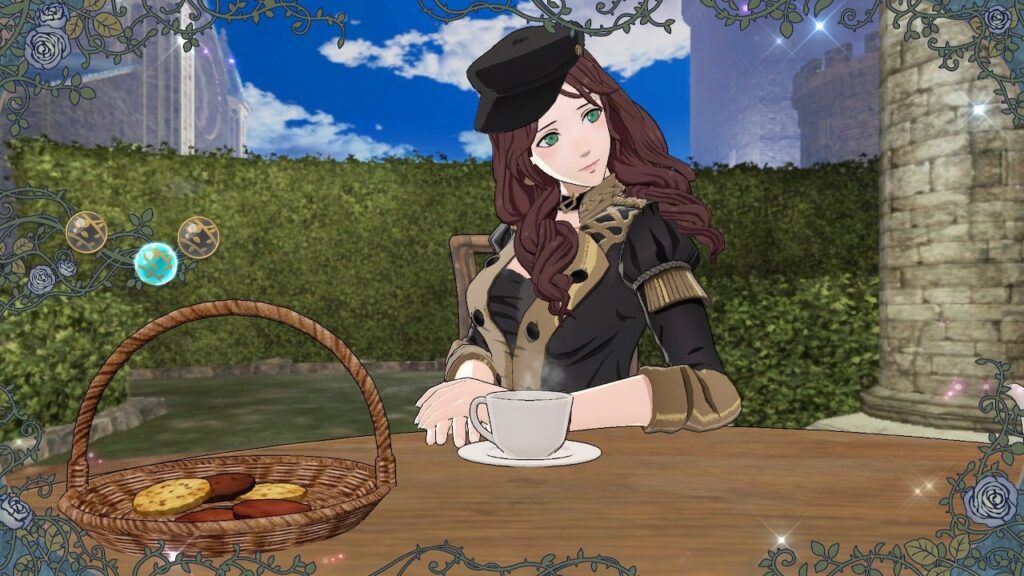
It is too anime-like though
Each of the three houses have, beyond their leaders, one or two major characters that shine during the course of the story. The remaining characters, however, are perhaps too inspired in anime tropes to win the day. It is not to say this is new to the franchise, we had some quirky characters in previous Fire Emblems, but they were fewer and had less importance. After the release of Fire Emblem Heroes and the boom of Fire Emblem waifus, it seems the developers decided to turn up the anime factor in Three Houses, giving us characters like Mercedes, Lysithea, Raphael, Bernadetta, and Caspar which are perfectly fit for any high-school modern anime and not exactly people living in a medieval fantasy world with nobles, warfare, and religious oppression.
Of course, this issue is not too harmful to the overall experience, but there are moments you may wish to strangle Bernadetta with her annoying screeches or punch Raphael because he only ever talks about eating. These moments could work positively if they were few, as they can be funny at some turns, but these characters are so overwhelmed by their quirks and high-school templates it can really get frustrating when pairing this with the grand scale of war.
It is good to understand that the second half of the game also offers a timeskip, which means we can see these teenage students as young adults. Sadly though, there is not much of a change to them besides new character artwork and clothing. It is still fun to see some of them all grown up, even if there are girls who manage to grow like 10 centimeters after their 15th birthday.
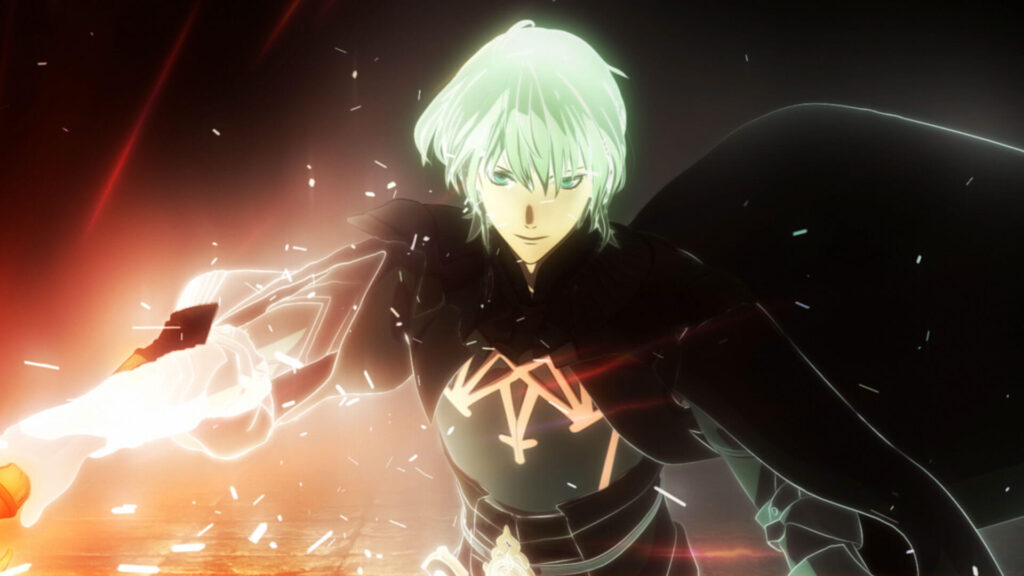
It’s big, really big
Fire Emblem: Three Houses is massive. If you take your time watching the dialogues and exploring, each playthrough can take something from 70 to 100 hours, and there are four paths by the second half that can really offer new insights about the story and that could push you for a repeat. This means you could easily get 200 hours or more of playing if you wish to see two or more paths.
Each playthrough can also be further improved with the vast array of different characters to choose, as well as allowing you to experiment with new instructions for some characters, opening up new classes to try, and new combinations. Not only you get to see these new characters in action, but using them may unlock their dialogues with other companions and Byleth, giving yet another thing to look out for.
The game also offers three difficulty options. The Normal offers a decent challenge to newcomers while Hard is perhaps too easy if you understand the mechanics better. There is, however, a new mode called Maddenning, which really bumps the difficulty and can be either a massive challenge for a clean new game or a fun enjoyment to use the new game plus benefits.
Intelligent Systems needs to improve
Fire Emblem: Three Houses is a big jump for Intelligent Systems and they certainly delivered an experience worthy of the franchise when it comes to combat, customization, and depth. They, however, still have a lot of work to do in terms of production quality. The game has weird performance issues within the monastery, the backgrounds during dialogues look horrendous, and many aspects outside combat could do with an improvement.
Anyway, Fire Emblem: Three Houses is, for now, the ultimate Fire Emblem experience for both veterans and newcomers. It may have taken a far too waifu-vibe as a consequence of Fire Emblem Heroes’ success, but its heart is still that of a decent medieval fantasy, full with warfare, tactical combat, and a lot of interesting characters to see and enjoy.
Oh, and please play it with the original japanese audio, you will thank me later.
Detailed Scores
-
Production
-
Content
-
Polish
-
Concept
-
Fun
